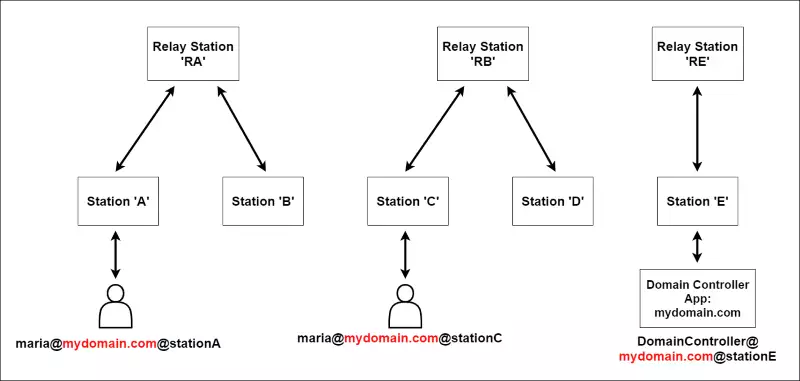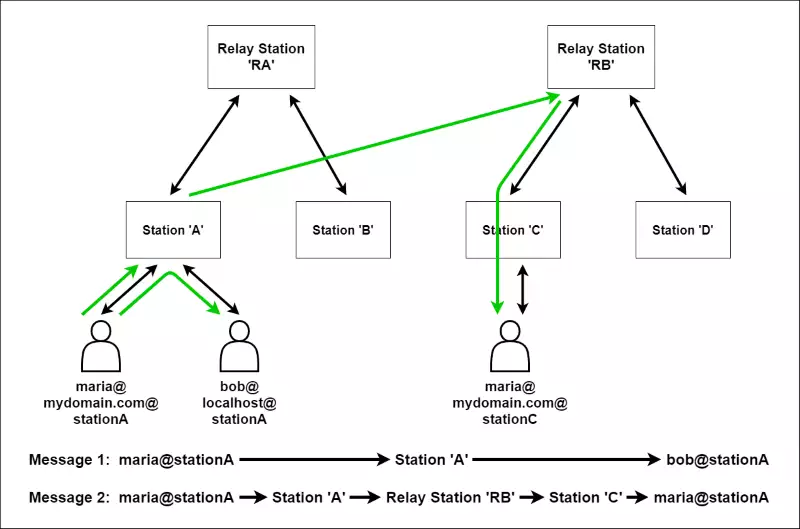Multi station network with multi presence
In a multi station network a user can connect to more than one station with the same domain creating multiple presences in the network. This method is supported by a domain controller also connected to a separate station.
With this solution the user is capable of connecting to the network using the same user and domain name from numerous stations. However, these accounts still can be identified uniquely by the station ID.

When dealing with multiples presences of a user, the conversations need to be synchronized for every presence. That means each presence has to receive all messages sent by the other stations.
To understand this, let’s take a look at the example figure below. Here, Bob would like to send a message to Maria. Bob is linked to Station A, meanwhile, Maria linked to both Station A and Station C. When Bob is sending a message to Maria, many message routes will be instantiated depending on the number of presences that Maria has.
In this example, Maria has got two presences, so the message will be delivered on two routes. First, the message goes to Bob’s station, which checks the address of the destination. At this point, Station A finds out that Maria has got addresses on two stations and splits the route up to two pieces. The first route delivers the message directly to Maria at Station A.
The second message route delivers the message to the other presence’s relay station on a Friend Link or creates a new link to that station. When the relay receives the message, it checks the destination address and forwards the message to the corresponding station which finally delivers the message to Maria.

In case, a user with multiple presences would like to post a message to an address with a single presence, all instances of the multi presence address need to be fully synchronized. To achieve that, the messages not only sent to the target station but the other presences of the sender as well.
The example presented on the figure below explains the process of how an address with multi presence sends a message in a multi station network. In that case, Maria wants to send a message to Bob. Maria has got two presences in the network. One linked to Station A and the other linked to Station C. Bob linked to Station A.
When Maria instantiates the message by sending it to its station, it checks the target address first but also recognizes that Maria has got another presence in the network. So here, the station sends the message directly to Bob and also to the other presence in Station C. This helps to keep every conversation up to date at each presence in the network.

